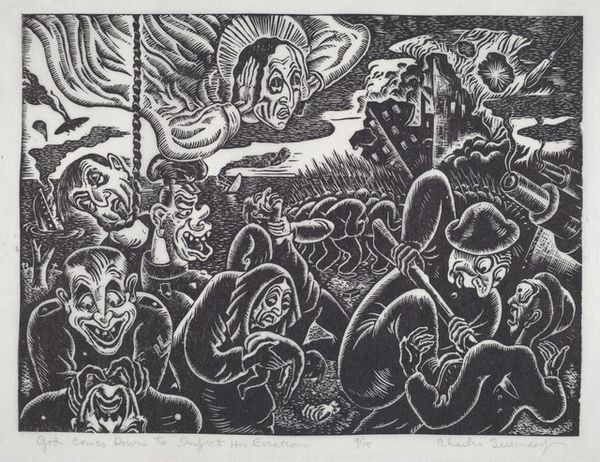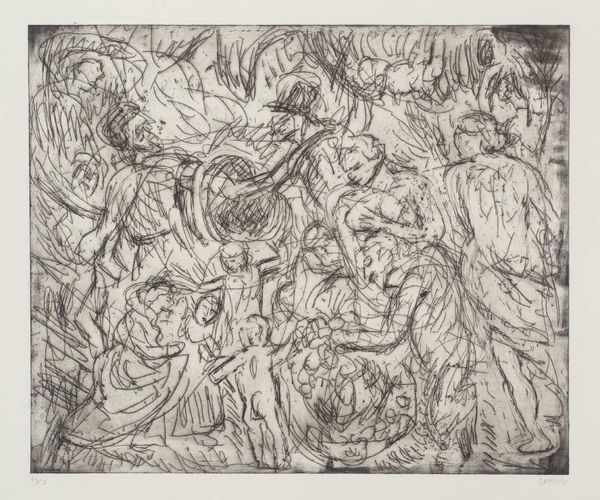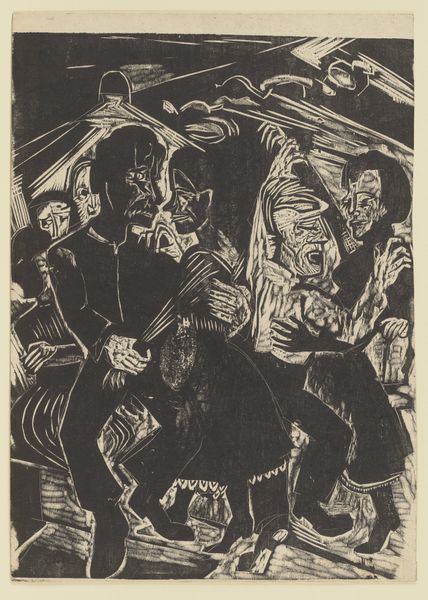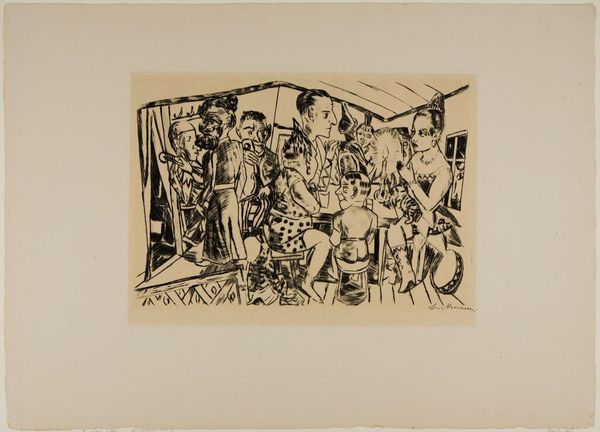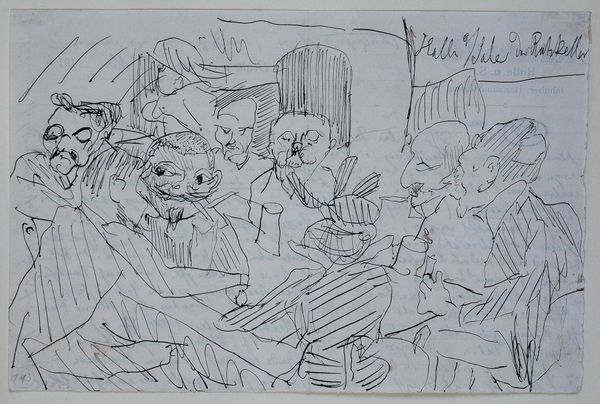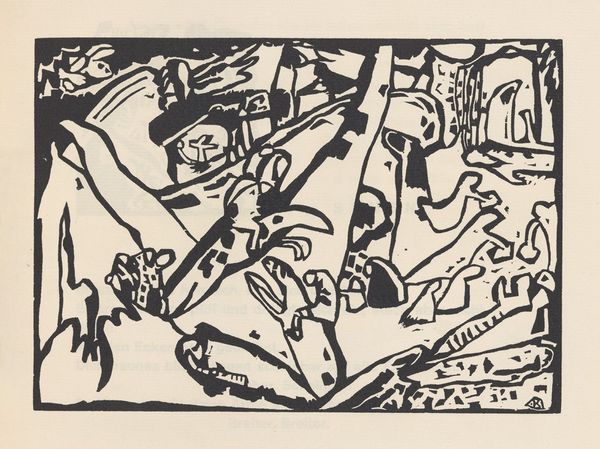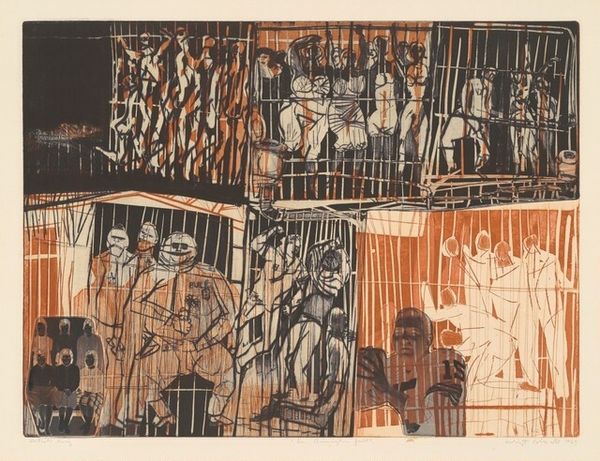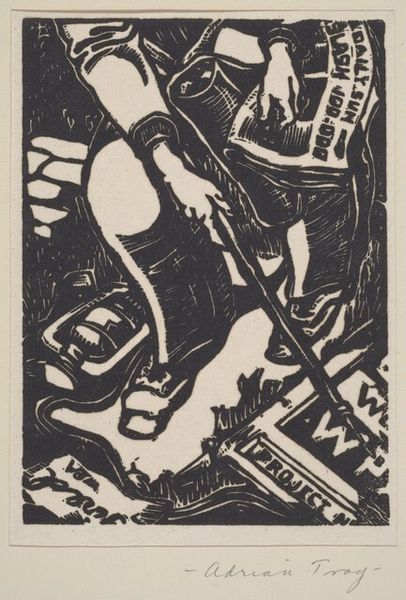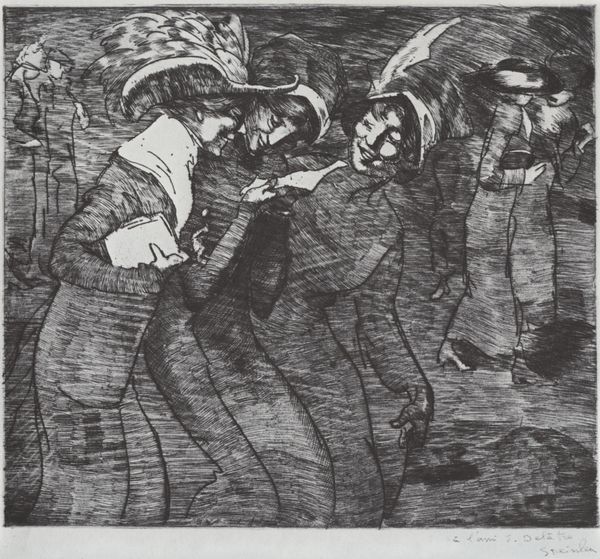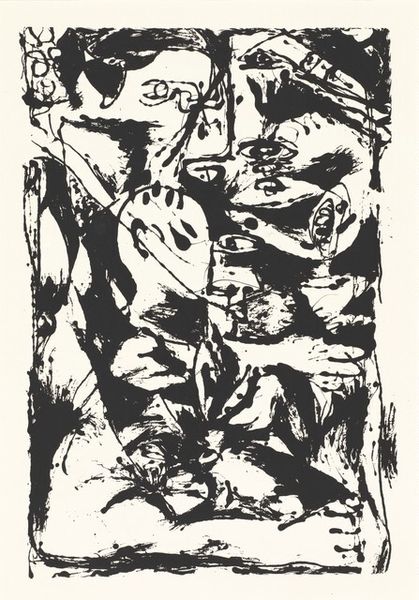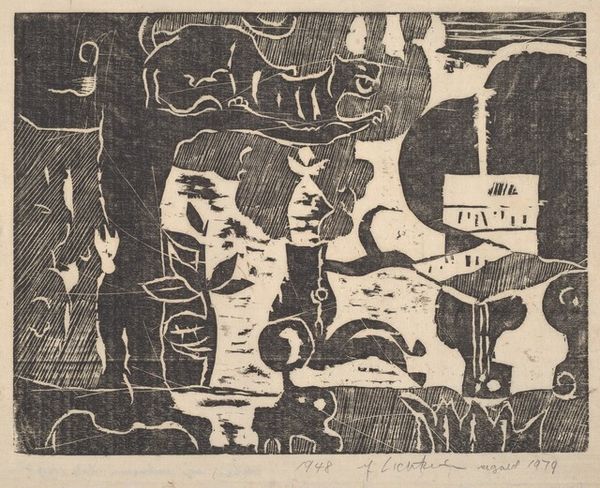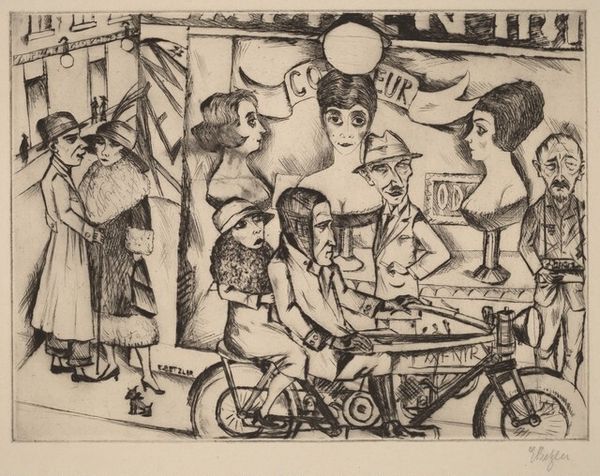
drawing, print, graphite
#
drawing
#
narrative-art
# print
#
pen illustration
#
ink drawing experimentation
#
ashcan-school
#
graphite
#
cityscape
#
modernism
Dimensions: Image: 290 x 380 mm Sheet: 404 x 585 mm
Copyright: National Gallery of Art: CC0 1.0
Editor: This graphite drawing, "Promised Land" by Nan Lurie, made sometime between 1935 and 1943, seems to depict a bustling cityscape. There is an interesting tension between the crowded composition and the seemingly detached figures. How do you interpret this work? Curator: Considering Lurie’s possible affiliation with the Ashcan School, I view it as a critique of the very materials that constitute its subject matter. Lurie uses readily available, inexpensive graphite and printmaking techniques to depict a landscape dominated by advertising. This choice subtly exposes the link between artistic production, mass consumerism and the urban spectacle during the depression era. Editor: I hadn’t considered that. So, the drawing materials themselves are making a statement? Curator: Exactly. The drawing material, easily mass-produced and accessible, mimics the ubiquity of advertising signs that promote an empty promise of enjoyment and luxury. The layering of ink and graphite seems to visually mimic the overstimulation of an urban environment. Editor: It’s almost as if the medium is the message about how relentless consumerism seeps into our daily experiences. The chaotic overlapping in the composition amplifies that. Curator: Precisely. And, think about how the printmaking process, used to replicate the image, reflects the mass dissemination of the advertisements depicted. The materiality becomes intrinsically linked to the message about capitalist excess and the unfulfilled promises within a rapidly changing society. What do you think the location suggests? Editor: I would not have picked up on these critical choices relating to its method without your expertise! I notice the ‘hull’ advertisement repeatedly; maybe this is somewhere like Kingston-Upon-Hull? That’s interesting, because Hull had serious socio-economic problems due to it being de-industrialised at the time. Curator: Interesting. I had not known the details about Hull, but your insight is very much in line with a materialist analysis. Thanks for teaching me something! Editor: Thanks to you as well. I appreciate the deeper connection you made to the context.
Comments
No comments
Be the first to comment and join the conversation on the ultimate creative platform.
